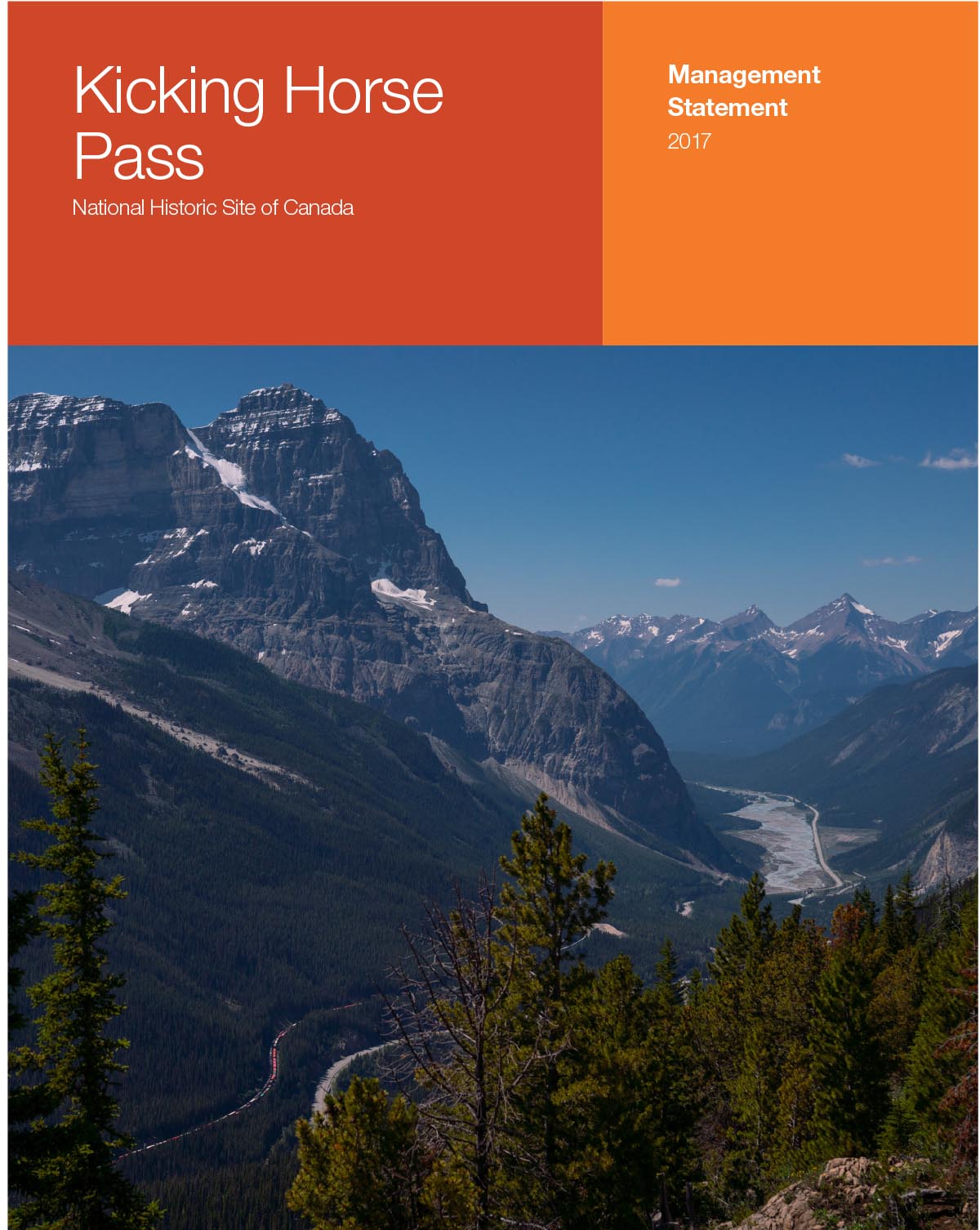Kicking Horse Pass National Historic of Canada Management Statement, 2017
Kicking Horse Pass National Historic Site
Table of contents

© Her Majesty the Queen in Right of Canada, represented by the Chief Executive Officer of Parks Canada, 2017
Cette publication est aussi disponible en français :
Énoncé de gestion du lieu historique national du Col-Kicking Horse, 2017
For more information about the management statement or about Kicking Horse Pass National Historic Site of Canada:
P.O. Box 99
Field, BC V0A 1G0
Canada
Introduction and overview
The Parks Canada Agency manages one of the finest and most extensive systems of protected natural and historic areas in the world. The Agency’s mandate is to protect and present these places for the benefit and enjoyment of current and future generations. This management statement outlines Parks Canada’s management approach and objectives for Kicking Horse Pass National Historic Site.
Kicking Horse Pass National Historic Site of Canada was designated in 1971 to commemorate the route chosen for the construction of the Canadian Pacific Railway through the Rocky Mountains. It is a large-scale cultural landscape that stretches across the Continental Divide from Lake Louise, Alberta in Banff National Park to Field, British Columbia in Yoho National Park. Construction of the railway through the pass in the 1880s constituted one of the final hurdles in the completion of the trans-continental railroad, and helped to bring the Province of British Columbia into the Canadian Confederation. The grade on the western slope of the pass exceeded the standard, so two Spiral Tunnels were excavated in the mountains to act as switchbacks that reduced the grade. The designated place is defined by a corridor 200m on either side of the centreline of the existing railway, except for the sections through the Spiral Tunnels where the designated place is bounded by the interior surface of each of the tunnels.
Kicking Horse Pass National Historic Site is rich in cultural resources dating from the period 1881 to 1909, when the current configuration of the railway was adopted with the completion of the Spiral Tunnels. In-situ resources include a stone and steel trestle bridge, portions of the original rail grade and run-away alignments, stone retaining walls, a stone bake oven used by construction workers, an old locomotive, the Spiral Tunnels, and numerous smaller archaeological sites and artefacts. The Historic Sites and Monuments Board plaque is displayed at the Spiral Tunnels viewpoint where key features of the site’s railway history are interpreted.
Today Kicking Horse Pass remains an essential link in an important national transportation corridor. It is the mainline of the Canadian Pacific Railway through the Rocky Mountains and is also the route for part of the Trans-Canada Highway over which 2.5 million vehicles travel each year.
Management approach
Parks Canada will continue to manage Kicking Horse Pass National Historic Site as part of an evolving transportation corridor. Through collaboration with the Canadian Pacific Railway and other stakeholders, in-site cultural resources will be protected and opportunities to connect travellers with the unique history of the site will be provided. As work to improve the Trans-Canada Highway proceeds, opportunities will be sought to enhance awareness and understanding of this important historic corridor. Management decisions will recognise the need to maintain a safe, efficient, and cost-effective national transportation corridor.
Management objectives
Collaboration with others
By working together with Canadian Pacific, the Friends of Yoho, and others, Parks Canada maximises opportunities to reveal the story of Kicking Horse Pass National Historic Site to the thousands of travellers who pass through each year.
Resource conservation
Key elements of the cultural landscape and in-situ cultural resources are protected as the corridor continues to evolve through upgrades to the Trans-Canada Highway. Basic monitoring of the state of cultural resources is undertaken, and interventions are documented.
Public understanding and appreciation
Parks Canada provides up-to-date information about the significance of Kicking Horse Pass at on-site exhibits, on the national historic site website, and on the Canadian Register of Historic Places. In addition, other tools and online resources are provided that connect the story of the site with external audiences.
Links
Historical information about Kicking Horse Pass National Historic Site- Date modified :